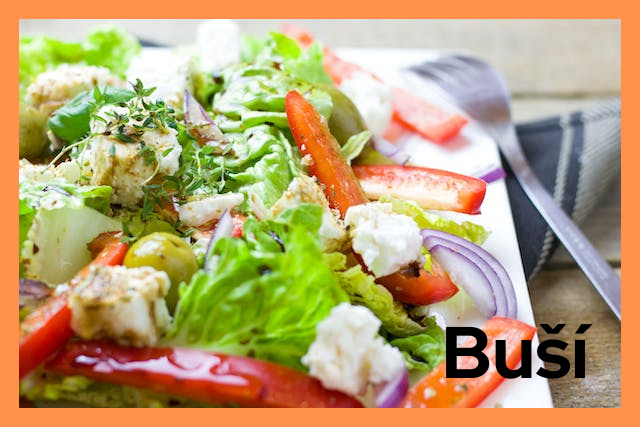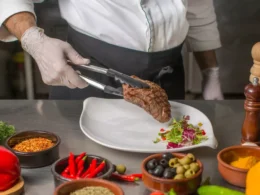Many people have a soft spot in their hearts and on their plates for Buší, a traditional meal that comes from Eastern Europe. Bu’s robust ingredients and flavorful sauce have enchanted foodies all over the world. This article takes readers on a gastronomic adventure to discover the history and current uses of Buší, starting with its simple beginnings.
What is Buší?
The renowned cuisine known as busí, which is pronounced “boo-shee,” originates from the rural hills of Eastern Europe. Thanks to its hearty taste and easy preparation, it has become a staple in many households. Busí is essentially a meal that is seasoned with a variety of herbs and spices and is mainly composed of potatoes, onions, flour, and eggs.
Origin and History
Cultural Significance
Bu is a cultural icon, representing all that is great about Eastern European food. It represents the ideals of friendliness and giving, as many families make big quantities to share with friends, neighbours, and even strangers. Not only is busí a food, but it also symbolises tradition, heritage, and the strong connections within a community.
Ingredients and Preparation
Busí is made by following a series of stages, the first of which is making a smooth base by boiling and mash potatoes. Before adding them to the potato mixture, the onions are sautéed until they turn a beautiful golden colour.Gradually add the flour and eggs to achieve the proper consistency. Then, shape the mixture into dumplings or patties and bake until the exterior turns crispy and golden brown.
Variations of Buší
Various regional versions of Busí have emerged as a result of its evolution to cater to various tastes and preferences. Buší is prepared differently in different regions, with distinct changes in ingredients, spice, and cooking methods. There is a Buší style for every taste, ranging from simple urban versions to more rustic farmhouse cuisine.
Health Benefits of Buší
Busí is a nutritious complement to any diet due to its delicious flavour and several health advantages. The nutritious elements in buší provide a wealth of necessary nutrients, such as vitamins, minerals, and fibre. The carbs in potatoes give you energy, and the taste and antioxidants in onions make it a whole lot better. Bus has been linked to better digestion, immunological function, and heart health when consumed regularly.
How to Enjoy Buší
You can enjoy busí in numerous ways, whether it’s as a comfortable main course or a wonderful side dish. It’s a versatile meal. You can enjoy buší with a variety of sides, including rich stews and crisp salads. For an extra flavour boost, try serving it plain or topping it with sour cream or fresh herbs. You may round up your lunch by adding typical Eastern European meals like borscht, goulash, or pierogi to your breakfast.
Buší in Popular Culture
Busí has become an iconic emblem of tradition and nostalgia in literature, film, and music, solidifying its position in popular culture. Eastern European cuisine is a renowned emblem thanks to its rustic charm and warm appeal, which have won the hearts of food fans worldwide.
Where to Find Buší
There are many culinary places worldwide that serve Buší, although it has its origins in Eastern European cuisine.In Eastern European villages, local markets and specialised stores often offer authentic Buší, crafted with care and tradition. Furthermore, numerous restaurants and cafés feature Buší on their menus, providing a comfortable environment for guests to enjoy this classic meal.
Making Buší at Home
Rest assured, those who are anxious to bring the enchantment of Buší to their own kitchen need not be afraid! You can make Buší that is on par with the best gourmet creations with just a few basic materials and a little imagination. To make Buší from scratch, look for cooking lessons and recipes online for step-by-step instructions. Find your own version of this popular meal by experimenting with various ingredients and cooking methods.
Conclusion
At its core, Buší is a masterpiece of Eastern European cuisine, not just a meal.Buší’s rich flavours and cultural significance continue to captivate foodies, from its humble roots to its modern versions. Whether enjoyed at home or in a cosy café, Buší remains a constant symbol of tradition and comfort.
FAQs
Is Buší suitable for vegetarians and vegans?
Can I freeze leftover Buší for later consumption?
It is possible to freeze Busí for later use. You may keep it in the freezer for up to three months when it cools entirely. Just make sure you seal it in a container.
What are some creative ways to serve Buší?
There are different ways to serve buší. For a heartier version, top it with melted cheese and bacon bits. For a lighter option, serve it alongside grilled veggies.
Are there any gluten-free alternatives to traditional Buší?
In Buší recipes, you can absolutely use gluten-free flours such as almond or chickpea flour in place of wheat flour.
Can I add other ingredients to my Buši for extra flavour?
Sure thing! To make your buši exactly how you like it, try adding extra ingredients like garlic, cheese, or herbs.











